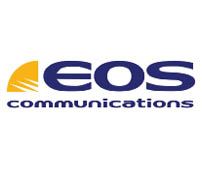- Contact 0870 350 7767
- |
- Advertise
Home > EOS Communications Ltd > SIP Trunking vs. Hosted VoIP - How to Decide?
SIP Trunking vs. Hosted VoIP - How to Decide?
 News and PR from EOS Communications Ltd - Published 06 March 2013
The choices for telephone systems can be confusing. This article covers the basics of SIP Trunks and Hosted VoIP Telephony.
News and PR from EOS Communications Ltd - Published 06 March 2013
The choices for telephone systems can be confusing. This article covers the basics of SIP Trunks and Hosted VoIP Telephony.
SIP trunks are IP connections from carrier/provider to customer carried over a suitable broadband connection. In essence, they are the IP version of a traditional ISDN30 channel. You can look at them as an ISDN replacement and they are cheaper in many cases, more flexible, and quicker to implement.
The SIP part of SIP Trunk means that the trunk is going to be used to signal Voice over IP (VoIP) using the SIP (Session Initiation Protocol) as its signalling of method. The Trunk portion is the connection (i.e. broadband connection).
In a SIP Trunk environment, there is no phone registration, no phone features offered (call waiting, call forwarding, etc.) but instead the features exist at the customers premises delivered in some other way, typically a PBX. The SIP trunk simply provides the transport to the outside world.
SIP Trunks are connected to any IP enabled PBX that can handle the SIP and provide the standard old-fashioned conversion (TDM). The telephone handsets do not need to be changed.
Hosted VoIP on the other hand does not require SIP trunks or an in-house PBX. The intelligence of the system is hosted like a PBX in the cloud. The cloud is of course a secure data centre. The connection to the cloud is via any suitable broadband pipe, without the need to define a fixed number of channels (SIP trunks).
This gives much greater flexibility in terms of the number of simultaneous telephone calls, so the number of simultaneous calls can vary constantly and go right up to the maximum bandwidth available. Whereas with SIP trunks, one call needs one SIP trunk, so you need to decide on (and pay for) a fixed number of SIP trunks upfront.
The only on site equipment required are the IP telephones. The telephones have all the normal features that you would expect in a modern office environment, but additional features can be added virtually instantaneously on a phone by phone basis. Hosted VoIP enables a much richer set of features to be added (or removed) as and when required. Similarly users can be added or removed at short notice allowing customers to react quickly to the changing demands of their business.
Hermes® is the hosted VoIP system provided by EOS, which provides customers a VoIP phone, user licence, phone features, configures and supports the phone and takes on all aspects of their telephone system.
Hermes® is the modern alternative to the traditional PBX.
Again, EOS believes there is not a single best connection solution and provide SIP trunks and hosted VoIP solutions as appropriate to the customers needs. We analyse the customers situation and recommend the best solution.
Please talk to us about the options. We are always happy to give advice and tailor bespoke solutions to fit your needs.
The SIP part of SIP Trunk means that the trunk is going to be used to signal Voice over IP (VoIP) using the SIP (Session Initiation Protocol) as its signalling of method. The Trunk portion is the connection (i.e. broadband connection).
In a SIP Trunk environment, there is no phone registration, no phone features offered (call waiting, call forwarding, etc.) but instead the features exist at the customers premises delivered in some other way, typically a PBX. The SIP trunk simply provides the transport to the outside world.
SIP Trunks are connected to any IP enabled PBX that can handle the SIP and provide the standard old-fashioned conversion (TDM). The telephone handsets do not need to be changed.
Hosted VoIP on the other hand does not require SIP trunks or an in-house PBX. The intelligence of the system is hosted like a PBX in the cloud. The cloud is of course a secure data centre. The connection to the cloud is via any suitable broadband pipe, without the need to define a fixed number of channels (SIP trunks).
This gives much greater flexibility in terms of the number of simultaneous telephone calls, so the number of simultaneous calls can vary constantly and go right up to the maximum bandwidth available. Whereas with SIP trunks, one call needs one SIP trunk, so you need to decide on (and pay for) a fixed number of SIP trunks upfront.
The only on site equipment required are the IP telephones. The telephones have all the normal features that you would expect in a modern office environment, but additional features can be added virtually instantaneously on a phone by phone basis. Hosted VoIP enables a much richer set of features to be added (or removed) as and when required. Similarly users can be added or removed at short notice allowing customers to react quickly to the changing demands of their business.
Hermes® is the hosted VoIP system provided by EOS, which provides customers a VoIP phone, user licence, phone features, configures and supports the phone and takes on all aspects of their telephone system.
Hermes® is the modern alternative to the traditional PBX.
Again, EOS believes there is not a single best connection solution and provide SIP trunks and hosted VoIP solutions as appropriate to the customers needs. We analyse the customers situation and recommend the best solution.
Please talk to us about the options. We are always happy to give advice and tailor bespoke solutions to fit your needs.




